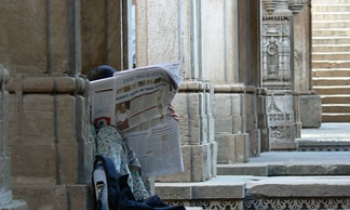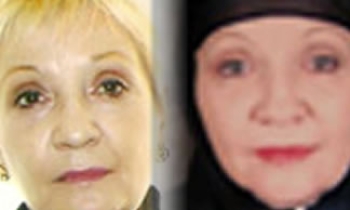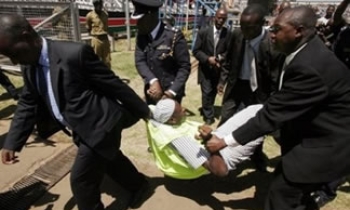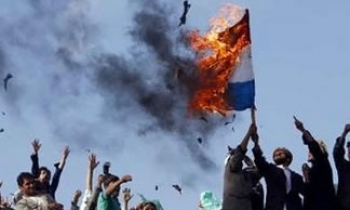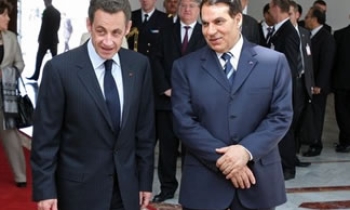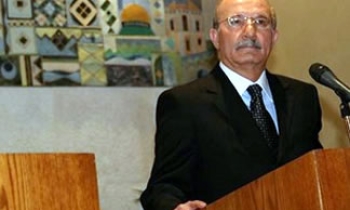A group of journalists traveling together in southern Lebanon, including several photographers, helped rescue trapped civilians this week in two towns damaged by Israeli missiles.
"[There were] far too many old people and children who simply couldn't make it across the rubble," said Polaris photographer Timothy Fadek, who helped rescue people at both scenes. "We simply carried them on our backs."
News photos showed Magnum photographers Chris Anderson and Thomas Dworzak, Yahoo! News multimedia journalist Kevin Sites, and Lebanese photographer Wael Ladki assisting civilians, in some cases carrying people on their backs. Among the others who helped with rescues were Paolo Pellegrin of Magnum, Lefteris Pitarakis of the Associated Press, photographer Kai Wiedenhöfer, and journalists from Turkey, according to Fadek.
The journalists carried stranded people across damaged streets in Bint Jbeil on Monday and Aitaroun on Tuesday. Both towns were shelled by the Israeli army in its fight against the Lebanese Islamist group Hezbollah. Residents, including elderly and disabled people, were stranded behind rubble, Fadek said, and the journalists carried them to clear roads where other civilians could drive them to hospitals.
Journalists typically do not involve themselves in events they are covering, but will step in to help when they are in the best position to do so – as when numerous journalists shared rides and supplies with Hurricane Katrina victims in the U.S. last year.
"The decisions that photographers and journalists make... is when it is abundantly clear that there is no civilian rescue team available," Fadek said. "In south Lebanon there is an absolute nonexistence of rescuers. It's a matter of just being a human being... You're there to help another person. It's a no-brainer, it has to be done."
The photographers involved in the rescues are part of a group of journalists staying in Tyre to cover the fighting on the Lebanon side of the border. For safety, they often drive to the sites of recent attacks in convoys of several vehicles, including some with visible television equipment, Fadek said. This increases the journalists' visibility to Israeli drones, making it less likely they will come under attack as they travel. It also means no one will be stranded if a vehicle breaks down.
Critics in the U.S. and the U.K., including radio commentator Rush Limbaugh, accused some of the Tyre-based journalists of photographing a staged rescue operation Sunday following an Israeli attack on Qana. Editors for the Associated Press, Reuters and Agence France-Presse strongly denied that the events seen in the photos were staged, according to an AP story about the accusations.
On the other side of the border, news agencies also have dispatched teams of photographers to Israel, where access to the battle lines is more tightly controlled. Still, some Israeli battle scenes have been photographed, as well as funerals of Israeli soldiers and the bomb shelters where some Israelis have taken refuge. Shaul Schwarz of Getty Images, Ariel Schalit of the Associated Press and Kai Pfaffenbach of Reuters are among the photographers who have documented the Israeli military this week.
Rina Castelnuovo, covering northern Israel for The New York Times, said many journalists are staying in the town of Kiryat Shemona. In a phone interview Thursday while traveling with Sipa Press photographer Heidi Levine, Castelnuovo described the randomness of the Hezbollah rocket attacks hitting the Israeli side.
"Earlier a rocket hit the road three minutes after we passed. Now a rocket has hit three minutes before we passed," she said. "What's happening here, it's something I didn't think anybody went through in the 21st Century. It's a missile war."
Castelnuovo said Israeli officials have set up roadblocks to keep journalists and others away from the army, but she and others have found ways in.
"I'm embarrassed to say it but we basically ran the military roadblocks," she said. "We pretended we didn't see the police signaling... Everybody's busy with their own thing."
Among Castelnuovo's pictures are an image on the front of Thursday's Times showing Israeli tanks and soldiers streaming into Lebanon.
Jensen Walker, a freelance photojournalist who has been in Israel during the conflict, including the northern city of Nahariya, said Wednesday that the military has kept most journalists away from the battle lines. Walker has covered people living in bomb shelters and has taken portraits of Israeli soldiers – some of whom he has helped along the way.
"Hitchhiking is totally normal here," Walker said. "I gave a lot of soldiers rides either from the bus stop to the artillery line or from the artillery line to the bus stop."



